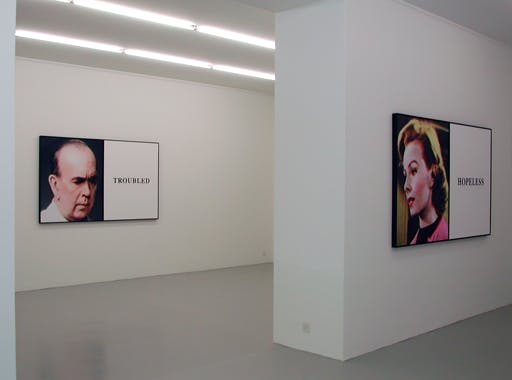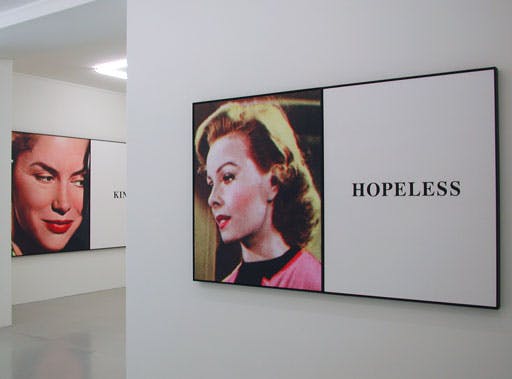We are pleased to be able to present the new series of works PRIMA FACIE (SECOND STATE) by the American artist John Baldessari (born 1931 in National City, CA). John Baldessari is one of the most important artists of our time. His pioneering work is currently on show in a two-part retrospective in the Museum of Modern Art Stiftung Ludwig in Vienna and the Kunsthaus Graz. John Baldessari lives and works in Santa Monica, CA.
The relationship between saying and showing, language and image is in the case of John Baldessari as with no other artist of his generation the subject of intensive artistic research. In his new series photographic images correspond with words that describe an emotion or characteristic. By placing adjectives such as “noble”, “kind”, “troubled”, “scornful” or “jolly” alongside photographic depictions of emotions, John Baldessari establishes the various possibilities of image and language as two forms of communication as well as the complex relationship in which these two fundamental human forms of expression stand.
At first glance the text appears to clarify the image, the image to illustrate the text. It is possible to form simple judgements in the sense of “this facial expression is noble, kind, funny” or “this person looks worried, that one despicable etc”. However at the same time the difference between text and image proves to be insurmountable: The generality that befits the linguistic expression and opens in the viewer a directed space for the imagination falls increasingly into conflict with the spatial individuation of the image that necessarily brings something to personal view. Even in the title of the exhibition, PRIMA FACIE (SECOND STATE) a chasm of human communication opens up with the latin “prima facie” that means something like “at first sight” and is used legally as proof of suggestive evidence. Even the emotional expression claiming general universal validity that finds expression in mimicry and gesture is subject to cultural conventions and opens the possibility to dissimulation or disguise. With this the question of the authenticity of expression becomes virulent. This is already discernible in the latin substantive “facies” since it can describe on the one hand the countenance or looks, but equally on the other hand the external appearance in contrast to reality.



